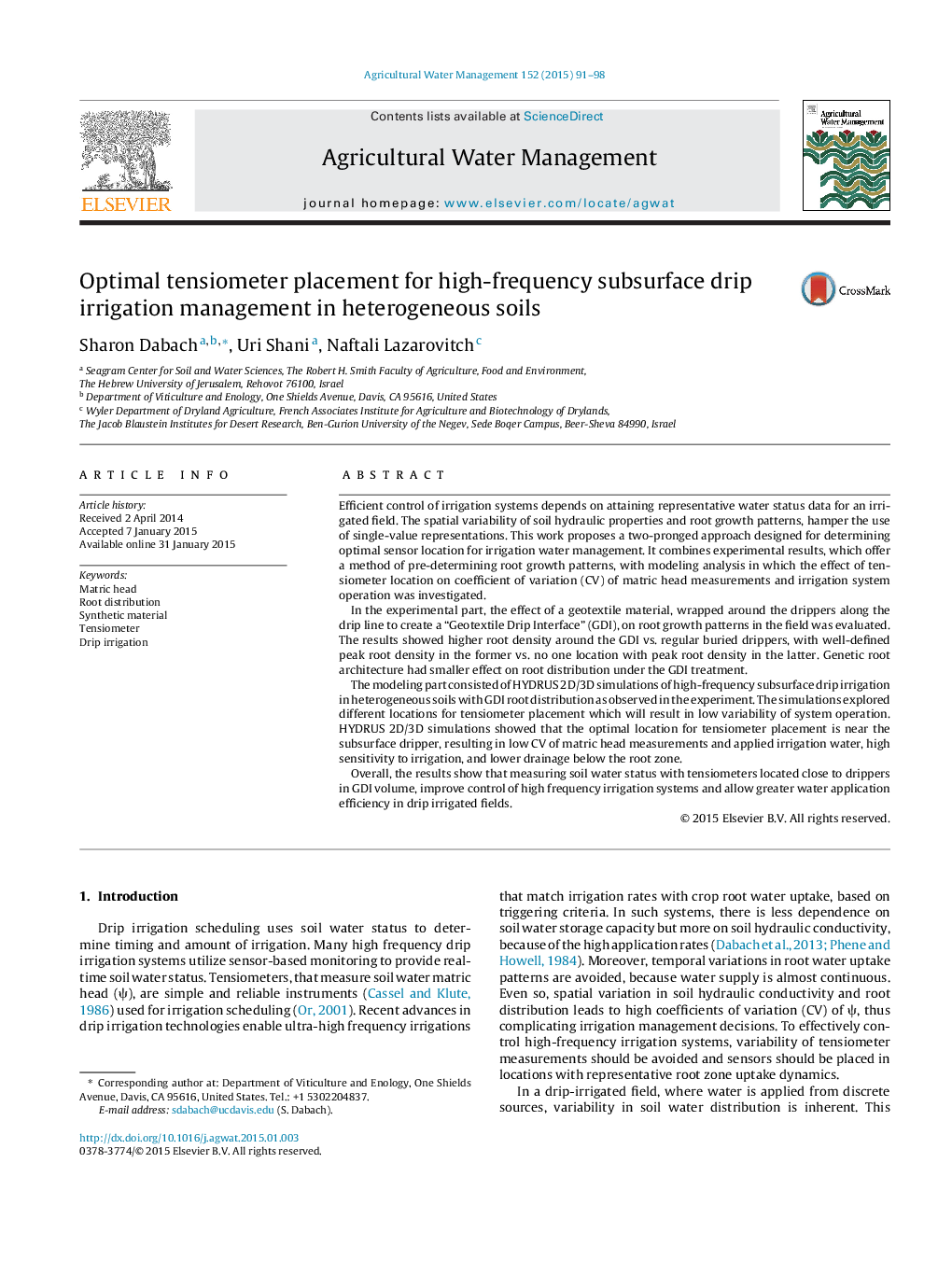| Article ID | Journal | Published Year | Pages | File Type |
|---|---|---|---|---|
| 4478520 | Agricultural Water Management | 2015 | 8 Pages |
•We applied a synthetic material around subsurface irrigation drip lines.•Root growth patterns were affected by the presence of the material.•Root density around the material increased and differences between two root architectures were diminished.•We modeled irrigation scenarios based on the modified root distribution.•Optimal location for tensiometer measurement is near a subsurface dripper in the synthetic material.
Efficient control of irrigation systems depends on attaining representative water status data for an irrigated field. The spatial variability of soil hydraulic properties and root growth patterns, hamper the use of single-value representations. This work proposes a two-pronged approach designed for determining optimal sensor location for irrigation water management. It combines experimental results, which offer a method of pre-determining root growth patterns, with modeling analysis in which the effect of tensiometer location on coefficient of variation (CV) of matric head measurements and irrigation system operation was investigated.In the experimental part, the effect of a geotextile material, wrapped around the drippers along the drip line to create a “Geotextile Drip Interface” (GDI), on root growth patterns in the field was evaluated. The results showed higher root density around the GDI vs. regular buried drippers, with well-defined peak root density in the former vs. no one location with peak root density in the latter. Genetic root architecture had smaller effect on root distribution under the GDI treatment.The modeling part consisted of HYDRUS 2D/3D simulations of high-frequency subsurface drip irrigation in heterogeneous soils with GDI root distribution as observed in the experiment. The simulations explored different locations for tensiometer placement which will result in low variability of system operation. HYDRUS 2D/3D simulations showed that the optimal location for tensiometer placement is near the subsurface dripper, resulting in low CV of matric head measurements and applied irrigation water, high sensitivity to irrigation, and lower drainage below the root zone.Overall, the results show that measuring soil water status with tensiometers located close to drippers in GDI volume, improve control of high frequency irrigation systems and allow greater water application efficiency in drip irrigated fields.
